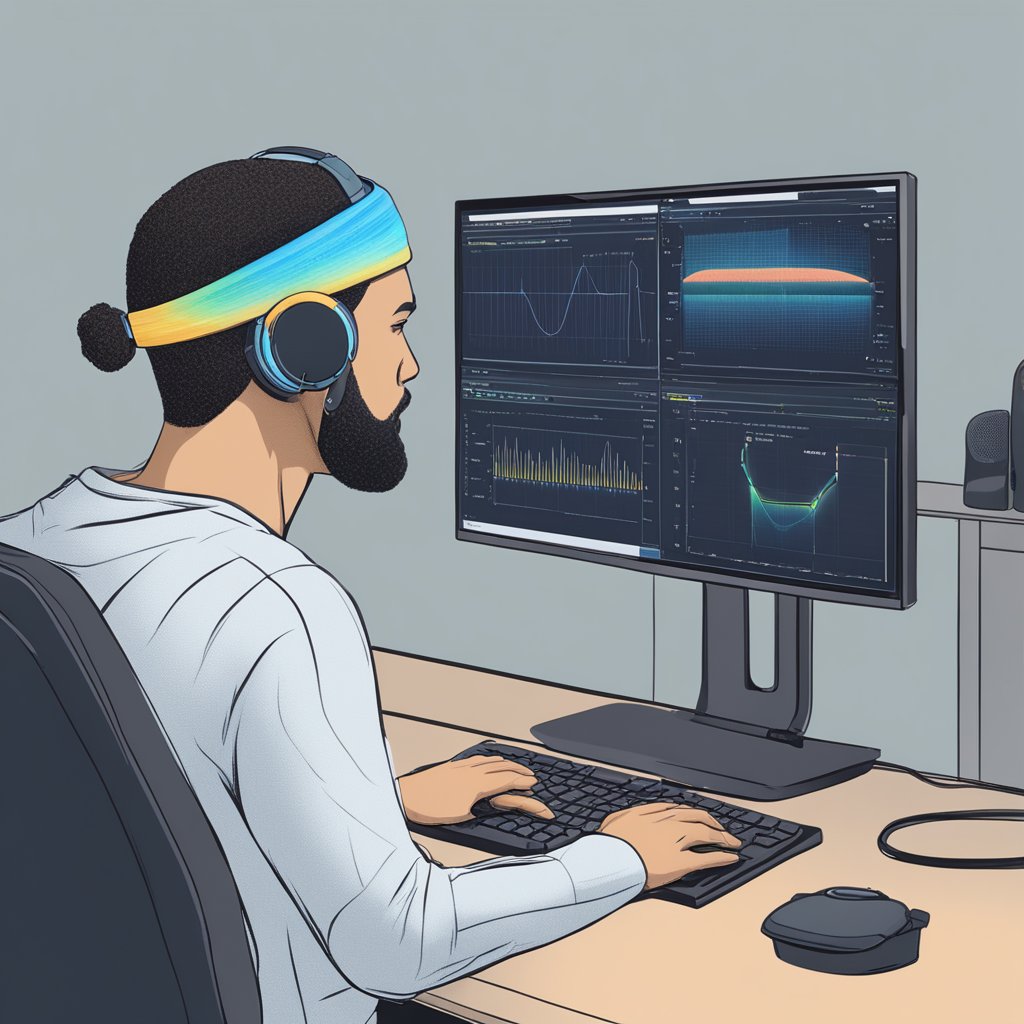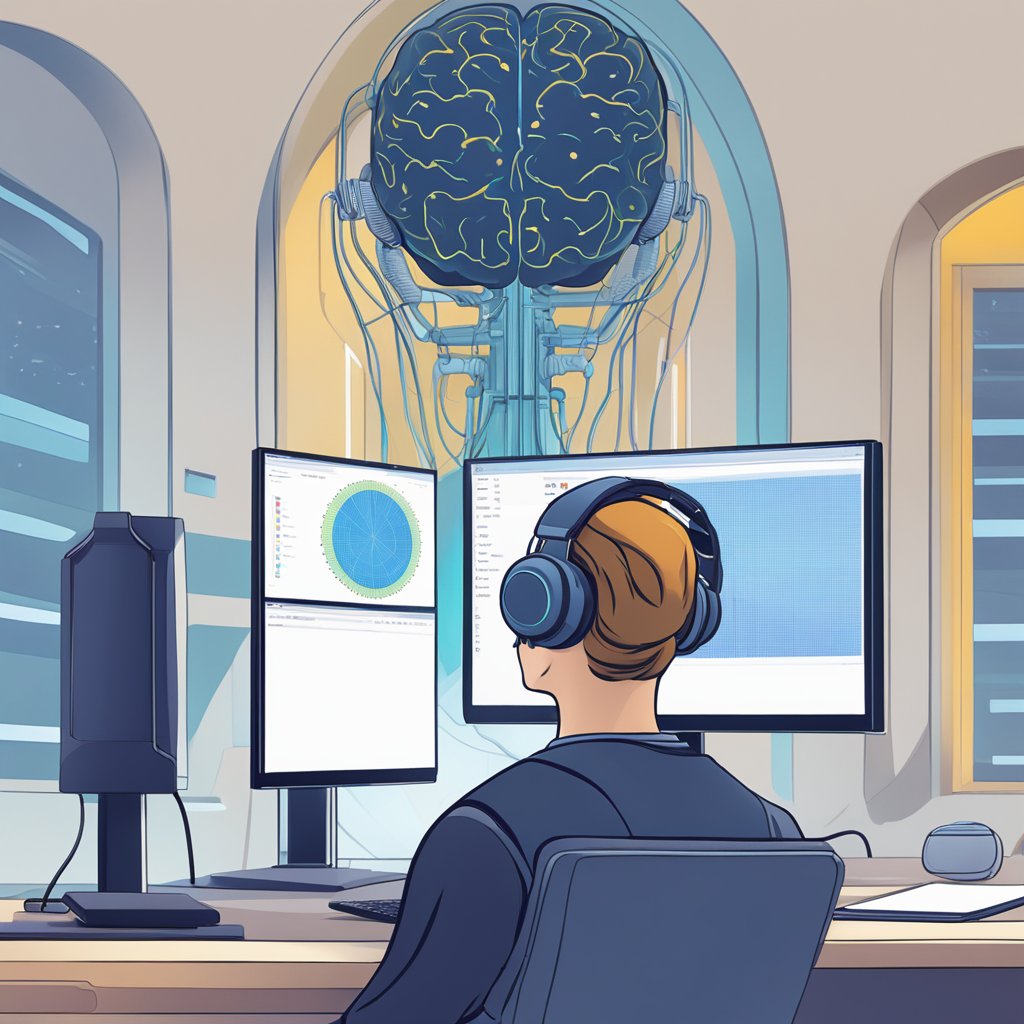With advancements in technology, the practice of neurofeedback has become accessible outside of clinical settings, allowing individuals to engage in this brain training technique in the comfort of their own homes. Neurofeedback, a method aimed at teaching an individual to alter brainwave activity, is typically used to improve mental health and cognitive performance. By using special equipment that monitors brain activity, users can receive real-time feedback and learn to control or change their brainwave patterns.

As a practitioner in the field of neurofeedback, I’ve observed the expansion of neurofeedback equipment designed for home use. This development opens doors for regular people to potentially enhance focus, reduce stress, and manage various psychological conditions without needing to visit professional facilities. This adaptation of clinical practices to a home environment is accompanied by specific training protocols that guide users through various exercises aimed at achieving desired changes in brainwave activity. These processes are geared toward optimizing mental well-being and can be tailored to cater to individual needs and goals.
While neurofeedback at home presents an intriguing avenue for personal health and wellness, it is crucial to consider its limitations and to approach it with realistic expectations. The equipment and protocols must be understood thoroughly to ensure safe and effective use, and while many may find benefit from these practices, they are not a cure-all solution. Clear, practical information and possibly supervision from a professional may be necessary to navigate the initial stages of
Understanding Neurofeedback

In exploring neurofeedback, it’s imperative to grasp the scientific underpinnings, how it relates to brain activity monitoring, its distinction from biofeedback, and the potential benefits it offers.
Scientific Foundations
Neurofeedback is grounded in neuroscience and hinges on the concept that individuals can gain control over their brain functions through conditioning. The process involves neurofeedback training, where real-time displays of brain activity, such as EEG, provide feedback to help me train my brain to function more effectively.
EEG and Brain Activity Monitoring
The basis of many neurofeedback systems lies in Electroencephalography (EEG), which monitors electrical patterns produced by brain activity, known as brainwave activity. I use EEG to assess how my brain’s electrical patterns correspond to different mental states and how they change in response to neurofeedback.
Biofeedback vs Neurofeedback
While both neurofeedback and biofeedback aim to improve self-regulation, neurofeedback specifically focuses on the brain and its activity. I distinguish them by considering that biofeedback addresses physiological responses, such as heart rate, while neurofeedback hones in on brainwave activity.
Benefits of Neurofeedback
The benefits of neurofeedback can include improvements in attention, cognitive performance, and emotional regulation. Through repeated neurofeedback training sessions, I might experience enhanced mental dexterity and a reduction in symptomatic conditions related to brain function abnormalities.
Neurofeedback Equipment for Home Use
In terms of neurofeedback from the comfort of my home, I rely on user-friendly equipment that ensures precision and ease of use. It’s imperative to choose devices backed by sound science and with an array of features for a customized experience.
Choosing the Right Device
When selecting an at-home neurofeedback device, I assess compatibility with my lifestyle and goals. It’s critical to look specifically for FDA-clearance when available, as it can be an indicator of safety and efficacy. Devices such as the Muse headband and the Myndlift system are prime examples, as they provide rigorous neurofeedback protocols tailored for home use.
- FDA-Cleared: Muse, Myndlift
- Not FDA-Cleared but Popular: FocusCalm, Narbis, NeuroSky
The Role of EEG Sensors
The EEG (electroencephalogram) sensors are the backbone of neurofeedback systems, capturing brainwave activity with precision. I ensure I have high-quality dry sensors for convenience or gel-based sensors for extended sessions. For example, the Muse headband incorporates dry sensors for an easy setup, while systems like Neuroptimal might require a more intricate sensor placement with gels.
- Dry Sensors: Muse, NeuroSky, Hapbee
- Gel-Based Sensors: Neuroptimal
Popular At-Home Neurofeedback Devices
My overview of at-home neurofeedback would not be complete without mentioning a few specific devices. The Muse headband stands out for its portability and guided meditation features. For a more gaming-oriented approach, Mendi offers brain exercises to enhance cognitive function. Sens.ai claims a more high-tech experience, harnessing advanced protocols for a fully personalized neurofeedback session.
- Muse Headband: Guided meditation, portable
- Mendi: Gaming-oriented, cognitive enhancement
- Sens.ai: Personalized protocols, high-tech equipment
Neurofeedback Training and Protocols
Neurofeedback training harnesses the power of EEG technology to reinforce focus, promote calmness, and address conditions like anxiety and ADHD, contributing to overall brain health. I’ll guide you through setting up your home system, conducting effective training sessions, and tracking your progress, ensuring you leverage neurofeedback’s full potential.
Setting Up Your Home Neurofeedback System
Setting up your neurofeedback system requires careful attention to detail. I make sure the EEG device I select comes with a comprehensive manual or online guide for installation. I follow these steps:
- Positioning the EEG Device: I place the EEG electrodes on my scalp according to the QEEG brain map, which identifies specific areas of brain activity I want to monitor.
- Ensuring Comfort: I adjust the headset for comfort, crucial for maintaining focus during neurofeedback training sessions.
- Connecting to Software: I install the necessary software on my computer, ensuring it’s compatible with my brain training system for remote neurofeedback training.
Conducting Effective Training Sessions
During neurofeedback training sessions, it’s important to maintain a consistent routine. Here’s what I concentrate on for effectiveness:
- Pre-Session Routine: I prepare myself by finding a quiet space, reducing distractions, and entering a calm state of mind.
- During the Session: I focus on the exercises provided by my system, often involving visual or auditory feedback that corresponds to my brain’s activity levels.
- Consistency: I schedule my sessions regularly, as consistency is key in neurofeedback training to obtain the desired results.
Tracking Progress and Results
To evaluate the effectiveness of my neurofeedback training, tracking progress is vital. I use these methods:
- Software Analysis: Post-session, my software provides analysis and I review the feedback to understand how my brain responded.
- Logging Sessions: I keep a log of my sessions along with any noticeable changes in focus or calmness, and symptoms of anxiety or ADHD over time, which helps correlate the training with outcomes.
- Consulting with Professionals: If available, I consult with a neurofeedback professional who can help interpret my data and adjust my training protocols as needed.
Health and Wellness Outcomes
In harnessing the power of neurofeedback at home, I’ve observed notable improvements in mental health and brain function. In particular, stress, sleep patterns, and attention regulation show significant and measurable changes.
Managing Stress and Anxiety
Neurofeedback trains my brain to maintain calm and enhance relaxation, leading to a reduction in anxiety levels. For example, when I use real-time EEG data to monitor my brainwaves, I can actively promote the alpha and theta brainwave patterns associated with serene states, diminishing the prevalence of stress-related symptoms.
- Effects on Relaxation: Increased feelings of calmness after sessions
- Impact on Anxiety Levels: Noticeable decrease in anxiety symptoms over time
Enhancing Sleep Quality
A structured neurofeedback program at home benefits my sleep by encouraging patterns that promote deep rest. Over the course of my sessions, an increase in sleep-related brain wave frequencies, like delta waves, translates to improved sleep quality.
- Delta Waves: Strengthening of sleep-inducing delta waves
- Sleep Metrics: Enhanced duration and quality of sleep, with fewer awakenings
Applications for ADHD and Peak Performance
For ADHD, neurofeedback is valuable in my quest to enhance concentration and lessen symptoms like inattentiveness. Similarly, honing my cognitive function caters to peak performance, especially in memory and productivity.
- ADHD Symptom Mitigation: Better focus and reduced hyperactivity
- Cognitive Gains: Improved memory recall and sustained attention for heightened productivity
Limitations and Considerations
While neurofeedback at home can be a convenient option, it’s important to navigate the potential drawbacks and understand the practicality of this approach. I’ll cover the possible side effects, the importance of professional input, and the inherent limitations of at-home neurofeedback systems.
Possible Side Effects and Precautions
Neurofeedback is generally considered safe, but improper use can lead to undesirable side effects. Some side effects of at-home neurofeedback include fatigue, headache, and irritability. To minimize risks:
- Monitor closely for side effects. This includes mental, emotional, or physical reactions post-sessions.
- Adjust settings carefully. Use manufacturer guidelines to avoid incorrect usage that could exacerbate side effects.
Expertise and Consultation with Professionals
Consulting a therapist or neurofeedback specialist is crucial when undertaking at-home neurofeedback. They can provide:
- Guidance based on knowledge and experience. Trained professionals can tailor neurofeedback protocols for optimal results.
- Quality control. Professionals can aid in interpreting data, potentially avoiding missteps in self-administered care.
Understanding The Limitations of At-Home Neurofeedback
At-home neurofeedback devices may not match the capabilities of those in a neurofeedback clinic. Limitations include:
- Reduced effectiveness. Home systems may offer fewer protocols and less nuanced feedback compared to professional setups.
- Limited scope of treatment. Complex conditions might not be as effectively managed without professional-grade equipment and knowledge.
Frequently Asked Questions
In this section, I will address common inquiries about neurofeedback at home, from equipment selection and cost to its benefits and possible contraindications.
What are the top neurofeedback devices for home use?
The Muse and Emotiv headsets are highly regarded in the user community. Both offer user-friendly interfaces and have been commended for their effectiveness in various feedback exercises.
How much does it generally cost to practice neurofeedback at home?
Costs can vary greatly, starting from around $200 for basic devices, and can exceed $2,000 for advanced systems with comprehensive features and professional-grade software support.
Which neurofeedback system is best for managing anxiety at home?
The NeuroSky MindWave is often recommended for its stress and anxiety reduction programs. Its affordability and ease of use make it an accessible choice for individuals looking to manage anxiety.
Can individuals effectively perform neurofeedback without a professional?
While self-guided neurofeedback is possible with home devices, it’s important for users to follow provided guidelines. For optimal results and safety, consulting a professional is advisable.
What are the proven benefits of using neurofeedback headsets?
Studies have shown that using neurofeedback headsets can improve focus, reduce stress, and aid in managing ADHD symptoms. Regular sessions are crucial to achieving these benefits.
Are there any contraindications for using neurofeedback technology?
Individuals with epilepsy or severe psychiatric conditions should consult with a healthcare provider before starting neurofeedback since it may influence brain activity that could trigger certain conditions.